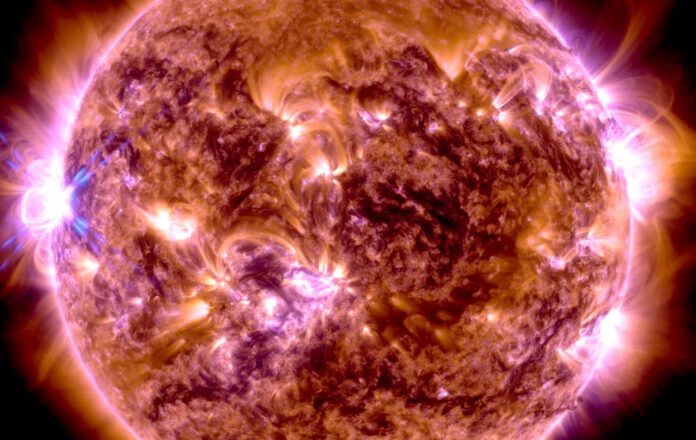
The Sun Produces Its Strongest Solar Flare of This Cycle
While we were ringing in the New Year with fireworks and champagne, a celestial firework occurred in the form of a powerful solar flare from our Sun – the most potent of this cycle. As we would discover, this event was a precursor of more to come.
Observation of the Solar Flare
Our Sun belted out a robust solar flare late last night that was recorded by the Solar Dynamics Observatory – a facility dedicated to constant monitoring of the Sun. As seen below, the solar flare is noticeable on the left.
Understanding Solar Flares
A solar flare is an explosion on the Sun’s surface, primarily caused when energy, typically contained by solar magnetic fields, is suddenly released. The intensity of last night’s solar flare was quite exceptional; according to NASA, it qualifies as a class X solar flare to be precise: an X5.0 solar flare.
Significance of Last Night’s Solar Flare
Last night’s solar flare will be recorded as the most powerful one since September 2017, making it the strongest of this cycle. The Sun undergoes a roughly 11-year cycle where solar activity peaks (known as the solar maximum) and reaches a low point (the solar minimum). During and leading up to the solar maximum, large numbers of sunspots occur on the Sun, resulting in significant solar flares. Scientists currently predict that we are heading towards a solar maximum: based on the latest studies, solar activity is expected to peak between January and October 2024. In this context, last night’s solar flare is not a major surprise. In fact, it might just be the beginning of more.
The Aftermath of the Solar Flare
Now, however, all eyes are focused on the potential aftermath of last night’s solar flare. Besides the flare, the Sun also produced what is known as a coronal mass ejection, or essentially a plasma cloud. There is a chance this cloud, abundant in protons and electrons, could hit Earth tomorrow. This event could cause a geomagnetic storm, a temporary disruption in Earth’s magnetosphere. Even though the name suggests otherwise, these disruptions can result in auroras or polar lights that can reach far beyond the poles during intense coronal mass ejections. There is speculation that this ejection could create spectacles even at lower latitudes. Whether we will get to witness this from Earth remains to be seen. Still, if not, there’s a chance we might see similar phenomena later in the year, given the peaking solar activity.











